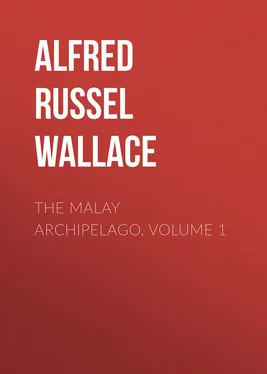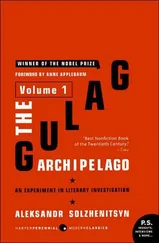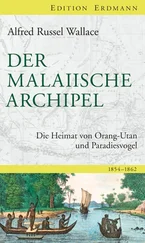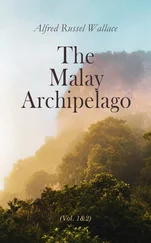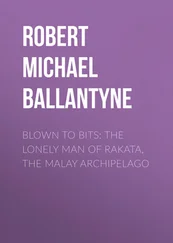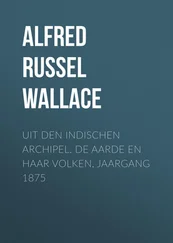Alfred Wallace - The Malay Archipelago, Volume 1
Здесь есть возможность читать онлайн «Alfred Wallace - The Malay Archipelago, Volume 1» — ознакомительный отрывок электронной книги совершенно бесплатно, а после прочтения отрывка купить полную версию. В некоторых случаях можно слушать аудио, скачать через торрент в формате fb2 и присутствует краткое содержание. Жанр: Путешествия и география, foreign_edu, foreign_antique, foreign_prose, на английском языке. Описание произведения, (предисловие) а так же отзывы посетителей доступны на портале библиотеки ЛибКат.
- Название:The Malay Archipelago, Volume 1
- Автор:
- Жанр:
- Год:неизвестен
- ISBN:нет данных
- Рейтинг книги:4 / 5. Голосов: 1
-
Избранное:Добавить в избранное
- Отзывы:
-
Ваша оценка:
- 80
- 1
- 2
- 3
- 4
- 5
The Malay Archipelago, Volume 1: краткое содержание, описание и аннотация
Предлагаем к чтению аннотацию, описание, краткое содержание или предисловие (зависит от того, что написал сам автор книги «The Malay Archipelago, Volume 1»). Если вы не нашли необходимую информацию о книге — напишите в комментариях, мы постараемся отыскать её.
The Malay Archipelago, Volume 1 — читать онлайн ознакомительный отрывок
Ниже представлен текст книги, разбитый по страницам. Система сохранения места последней прочитанной страницы, позволяет с удобством читать онлайн бесплатно книгу «The Malay Archipelago, Volume 1», без необходимости каждый раз заново искать на чём Вы остановились. Поставьте закладку, и сможете в любой момент перейти на страницу, на которой закончили чтение.
Интервал:
Закладка:
Now let us endeavour to imagine (what it is very probable may occur in future ages) that a slow upheaval of the bed of the Atlantic should take place, while at the same time earthquake-shocks and volcanic action on the land should cause increased volumes of sediment to be poured down by the rivers, so that the two continents should gradually spread out by the addition of newly-formed lands, and thus reduce the Atlantic which now separates them, to an arm of the sea a few hundred miles wide. At the same time we may suppose islands to be upheaved in mid-channel; and, as the subterranean forces varied in intensity, and shifted their points of greatest action, these islands would sometimes become connected with the land on one side or other of the strait, and at other times again be separated from it. Several islands would at one time be joined together, at another would be broken up again, until at last, after many long ages of such intermittent action, we might have an irregular archipelago of islands filling up the ocean channel of the Atlantic, in whose appearance and arrangement we could discover nothing to tell us which had been connected with Africa and which with America. The animals and plants inhabiting these islands would, however, certainly reveal this portion of their former history. On those islands which had ever formed a part of the South American continent, we should be sure to find such common birds as chatterers and toucans and hummingbirds, and some of the peculiar American quadrupeds; while on those which had been separated from Africa, hornbills, orioles, and honeysuckers would as certainly be found. Some portion of the upraised land might at different times have had a temporary connection with both continents, and would then contain a certain amount of mixture in its living inhabitants. Such seems to have been the case with the islands of Celebes and the Philippines. Other islands, again, though in such close proximity as Bali and Lombock, might each exhibit an almost unmixed sample of the productions of the continents of which they had directly or indirectly once formed a part.
In the Malay Archipelago we have, I believe, a case exactly parallel to that which I have here supposed. We have indications of a vast continent, with a peculiar fauna and flora having been gradually and irregularly broken up; the island of Celebes probably marking its furthest westward extension, beyond which was a wide ocean. At the same time Asia appears to have been extending its limits in a southeast direction, first in an unbroken mass, then separated into islands as we now see it, and almost coming into actual contact with the scattered fragments of the great southern land.
From this outline of the subject, it will be evident how important an adjunct Natural History is to Geology; not only in interpreting the fragments of extinct animals found in the earth's crust, but in determining past changes in the surface which have left no geological record. It is certainly a wonderful and unexpected fact that an accurate knowledge of the distribution of birds and insects should enable us to map out lands and continents which disappeared beneath the ocean long before the earliest traditions of the human race. Wherever the geologist can explore the earth's surface, he can read much of its past history, and can determine approximately its latest movements above and below the sea-level; but wherever oceans and seas now extend, he can do nothing but speculate on the very limited data afforded by the depth of the waters. Here the naturalist steps in, and enables him to fill up this great gap in the past history of the earth.
One of the chief objects of my travels was to obtain evidence of this nature; and my search after such evidence has been rewarded by great success, so that I have been able to trace out with some probability the past changes which one of the most interesting parts of the earth has undergone. It may be thought that the facts and generalizations here given would have been more appropriately placed at the end rather than at the beginning of a narrative of the travels which supplied the facts. In some cases this might be so, but I have found it impossible to give such an account as I desire of the natural history of the numerous islands and groups of islands in the Archipelago, without constant reference to these generalizations which add so much to their interest. Having given this general sketch of the subject, I shall be able to show how the same principles can be applied to the individual islands of a group, as to the whole Archipelago; and thereby make my account of the many new and curious animals which inhabit them both, more interesting and more instructive than if treated as mere isolated facts.
Contrasts of Races.—Before I had arrived at the conviction that the eastern and western halves of the Archipelago belonged to distinct primary regions of the earth, I had been led to group the natives of the Archipelago under two radically distinct races. In this I differed from most ethnologists who had before written on the subject; for it had been the almost universal custom to follow William von Humboldt and Pritchard, in classing all the Oceanic races as modifications of one type. Observation soon showed me, however, that Malays and Papuans differed radically in every physical, mental, and moral character; and more detailed research, continued for eight years, satisfied me that under these two forms, as types, the whole of the peoples of the Malay Archipelago and Polynesia could be classified. On drawing the line which separates these races, it is found to come near to that which divides the zoological regions, but somewhat eastward of it; a circumstance which appears to me very significant of the same causes having influenced the distribution of mankind that have determined the range of other animal forms.
The reason why exactly the same line does not limit both is sufficiently intelligible. Man has means of traversing the sea which animals do not possess; and a superior race has power to press out or assimilate an inferior one. The maritime enterprise and higher civilization of the Malay races have enabled them to overrun a portion of the adjacent region, in which they have entirely supplanted the indigenous inhabitants if it ever possessed any; and to spread much of their language, their domestic animals, and their customs far over the Pacific, into islands where they have but slightly, or not at all, modified the physical or moral characteristics of the people.
I believe, therefore, that all the peoples of the various islands can be grouped either with the Malays or the Papuans; and that these two have no traceable affinity to each other. I believe, further, that all the races east of the line I have drawn have more affinity for each other than they have for any of the races west of that line; that, in fact, the Asiatic races include the Malays, and all have a continental origin, while the Pacific races, including all to the east of the former (except perhaps some in the Northern Pacific), are derived, not from any existing continent, but from lands which now exist or have recently existed in the Pacific Ocean. These preliminary observations will enable the reader better to apprehend the importance I attach to the details of physical form or moral character, which I shall give in describing the inhabitants of many of the islands.
CHAPTER II. SINGAPORE
FEW places are more interesting to a traveller from Europe than the town and island of Singapore, furnishing, as it does, examples of a variety of Eastern races, and of many different religions and modes of life. The government, the garrison, and the chief merchants are English; but the great mass of the population is Chinese, including some of the wealthiest merchants, the agriculturists of the interior, and most of the mechanics and labourers. The native Malays are usually fishermen and boatmen, and they form the main body of the police. The Portuguese of Malacca supply a large number of the clerks and smaller merchants. The Klings of Western India are a numerous body of Mahometans, and, with many Arabs, are petty merchants and shopkeepers. The grooms and washermen are all Bengalees, and there is a small but highly respectable class of Parsee merchants. Besides these, there are numbers of Javanese sailors and domestic servants, as well as traders from Celebes, Bali, and many other islands of the Archipelago. The harbour is crowded with men-of-war and trading vessels of many European nations, and hundreds of Malay praus and Chinese junks, from vessels of several hundred tons burthen down to little fishing boats and passenger sampans; and the town comprises handsome public buildings and churches, Mahometan mosques, Hindu temples, Chinese joss-houses, good European houses, massive warehouses, queer old Kling and China bazaars, and long suburbs of Chinese and Malay cottages.
Читать дальшеИнтервал:
Закладка:
Похожие книги на «The Malay Archipelago, Volume 1»
Представляем Вашему вниманию похожие книги на «The Malay Archipelago, Volume 1» списком для выбора. Мы отобрали схожую по названию и смыслу литературу в надежде предоставить читателям больше вариантов отыскать новые, интересные, ещё непрочитанные произведения.
Обсуждение, отзывы о книге «The Malay Archipelago, Volume 1» и просто собственные мнения читателей. Оставьте ваши комментарии, напишите, что Вы думаете о произведении, его смысле или главных героях. Укажите что конкретно понравилось, а что нет, и почему Вы так считаете.
